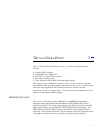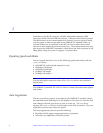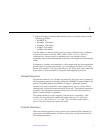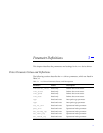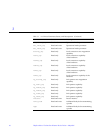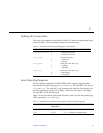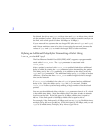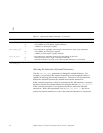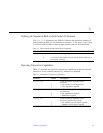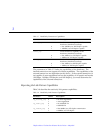
12 Platform Notes: The hme Fast Ethernet Device Driver—May 1996
3
By default, the driver sets ipg1 to 8-byte time and ipg2 to 4-byte time, which
are the standard values. (Byte time is the time it takes to transmit one byte on
the link, with a link speed of either 100 Mbps or 10 Mbps.)
If your network has systems that use longer IPG (the sum of ipg1 and ipg2)
and if those machines seem to be slow in accessing the network, increase the
values of ipg1 and ipg2 to match the longer IPGs of other machines.
Defining an Additional Delay Before Transmitting a Packet Using
lance_mode and ipg0
The Fast Ethernet Parallel Port SCSI (FEPS) ASIC supports a programmable
mode called lance_mode. The ipg0 parameter is associated with
lance_mode.
After a packet is received with lance_mode enabled (default) an additional
delay is added by setting the ipg0 parameter before transmitting the packet.
This delay, set by the ipg0 parameter, is in addition to the delay set by the
ipg1 and ipg2 parameters. The additional delay set by ipg0 helps to reduce
collisions. Systems that have lance_mode enabled might not have enough
time on the network.
If lance_mode is disabled, the value of ipg0 is ignored and no additional
delay is set. Only the delays set by ipg1 and ipg2 are used. Disable
lance_mode if other systems keep sending a large number of back-to-back
packets.
You can set the additional delay with the ipg0 parameter from 0 to 31, which
is the nibble time delay. Note that nibble time is the time it takes to transfer
four bits on the link. If the link speed is 10 Mbps, nibble time is equal to
400 ns. If the link speed is 100 Mbps, nibble time is equal to 40 ns.
For example, if the link speed is 10 Mbps, and you set ipg0 to 20 nibble times,
multiply 20 by 400 ns to get 800 ns. If the link speed is 100 Mbps, and you set
ipg0 to 30 nibble-times, multiply 30 by 40 ns to get 120 ns.




